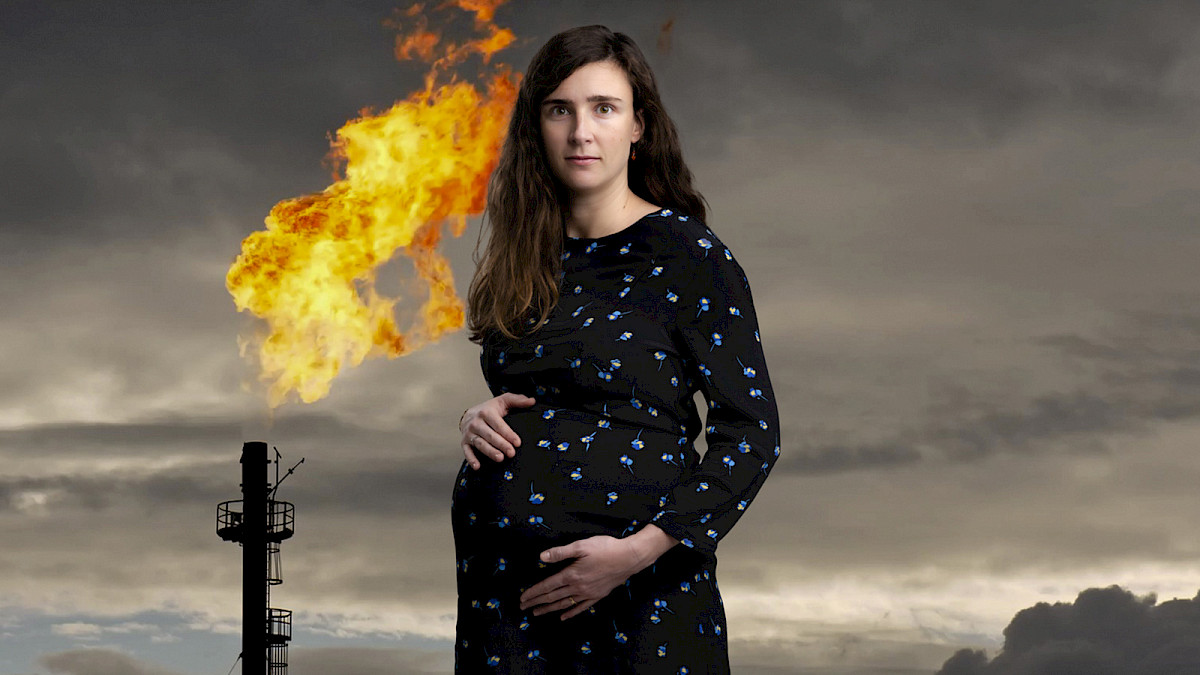Evaluating human health impacts of Woodfibre LNG's flarestack
February 22, 2024
Tracey Saxby

Did you know that Woodfibre LNG proposes to build a 140 metre high flare stack?
Or that the flare will be 30 metres high during controlled flaring, and up to 60 metres high during start-up, unplanned shut-downs, and emergency events?
Flaring is the burning of excess methane and results in local air pollution including fine particulate matter (PM2.5), nitrous oxides, and ozone.
What are the human health impacts of flaring?
There's already evidence that flaring can impact human health, and chronic exposure can increase rates of asthma, heart disease, lung disease, premature death, and mortality.
Last year, the BC Greens called for the Provincial government to press pause on the Woodfibre LNG project, citing a recent U.S. study that showed that pregnant people regularly exposed to flaring at fossil-fuel facilities are at a 50% higher risk of premature birth.
The Texas study defined a high amount of flaring as 10 or more flare events. Woodfibre LNG claims that their flare will only operate 3% of the time. That's equivalent to ~43 minutes every day, or ~11 days of the year, which exceeds the definition of "a high amount of flaring."
Woodfibre LNG responded that it's "not fair" to compare the potential human health impacts of its flarestack to a study in Texas. The researchers replied that "it only requires limited exposure to a single flaring site to lead to health risks."
*******
New research project to study impacts of Woodfibre LNG's flarestack
My Sea to Sky is proud to announce that we are collaborating with researchers and Vancouver Coastal Health to study the air quality and potential health impacts for people living within ten kilometres of Woodfibre LNG's flarestack.
"If there's population close to flaring, and flaring that appears very often, we can highly suspect health impacts on the population,” said Dr Laura Minet, lead researcher of the study, and head of the Clean Air lab at the University of Victoria.
This will be a first-of-its-kind study in Canada, co-funded by the federal government’s Natural Sciences and Engineering Research Council of Canada. The joint study includes scientists from the University of Victoria, Vancouver Coastal Health, the Canadian Association of Physicians for the Environment, Simon Fraser University, University of Toronto, and Texas A&M University.
Read the latest news coverage by CBC News and Times Colonist.
*******
Industry is underestimating emissions
Many other LNG projects worldwide have significantly underestimated how much flaring will be required during startup and operations.
A recent study also revealed that the oil and gas industry in Alberta has been under-reporting air pollution by 1,900% to over 6,300%.
“If flaring is underestimated it would mean that the air quality impacts – and associated health impacts – of those facilities are also underestimated,” said Dr Tim Takaro, member of CAPE and Professor Emeritus, Faculty of Health Sciences, at Simon Fraser University.
*******
Breaking through industry deception
Through all the media coverage this week, Woodfibre LNG has responded by claiming flaring is "rare" and "harmless."
We recommend listening to Gloria Macarenko's interview with Dr Tim Takaro on The Early Edition as he calls out Woodfibre LNG and the gas industry in British Columbia as "highly deceptive."
*******
Should we press pause on Woodfibre LNG?
Last month the Biden administration announced that it has paused approvals on newly proposed LNG terminals, to “guard against risks to the health of our communities, especially frontline communities in the United States who disproportionately shoulder the burden of pollution from new export facilities.”
Many permits are still required before Woodfibre LNG can proceed, including a provincial air quality permit.
What do you think? Should we call on Premier David Eby to cancel the permits for Woodfibre LNG?
*******
With hope and determination,
Tracey Saxby
Executive Director
My Sea to Sky

My Sea to Sky is incredibly proud and grateful to say that we rely on the My Sea to Sky community for small donations that provide the majority of our funding. Since our launch in 2014, we have been funded through personal savings, family and friends; and powered by the passion of our volunteers. Your generous contribution will help us to run our critical campaigns to defend, protect, and restore Howe Sound. Can you chip in?